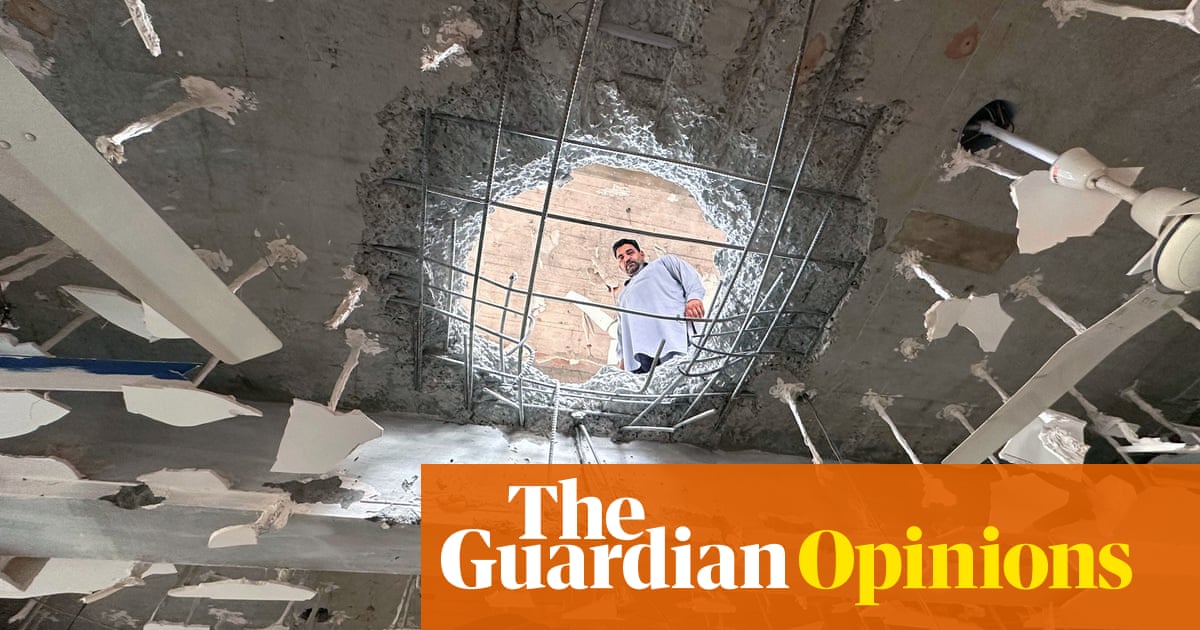Concluding a“landmark” trade agreementwith the UK andlaunching military operations against Pakistanon the same day: it is fair to say that, for India, the future and the past have collided this week. The agreement with Britain, which has been three years in the making, is one of several India is negotiating, including with the US and EU. It illustrates its appeal as a rising global power – the world’s most populous country and its fastest-growing major economy, which is also the fifth (and on course to be third) largest overall. In contrast, the military operations targeting Pakistan and Pakistan-administered Kashmir demonstrate how India continues to be bogged down by instabilities in its neighbourhood and held hostage to its history.
India’s military actions are in response to a terrorist attack last month in which26 tourists were killedin Indian-administered Kashmir. The name of the military operation – Sindoor – refers to a symbol of marriage, alluding to the women who lost their husbands in the attack thatselectively targeted Hindu men. New Delhi says it is trying to ensure the conflict remains limited between the nuclear-armed neighbours. It says its operations have targeted terrorist infrastructure rather than military facilities, although civilian casualties have been reported, andreferredto its military action as a “precision strike” that has been “focused, measured and non-escalatory in nature”.
Whether it remains “non-escalatory” will depend on Pakistan’s response. The situation remains precarious amid the risk of accidental escalation, limited external pressure and both sides adopting an assertive military posture to appease their domestic political constituencies and hyper-nationalist foreign policies. In the past, the US played a prominent role in de-escalating tensions. But President Donald Trump nonchalantly referred to the current hostilities as a “a shame”, while stating earlier that both countries would sort it out in “one way or another”. In a world where the US sees international relations through the prism of “spheres of influence” – as reflected in Trump’s claims to Canada, Greenland and the Panama canal, while seeing the Russian invasion of Ukraine as Europe’s problem – there is clearly a limited appetite for Washington to get involved in South Asian geopolitics.
India and Pakistan have fought three wars since they were established in 1947, two of them over Kashmir. The territory is vital to Pakistan’s security, with about 80% of the country’s cultivated landdependent on water from the Induswater system that traverses Kashmir – that’s why the recent decision by India to hold a longstanding water agreement in abeyance is seen as an existential threat to Pakistan. A week before the terrorist attack, Pakistan’s army chief, Asim Munir, referred to Kashmir as Pakistan’s“jugular vein”. Reports of critical mineral deposits in Kashmir have also elevated the strategic importance of the territory to India.
However, at the heart of the tensions is the question of identity rooted in the scars of partition in 1947 that created the countries of India and Pakistan. The Pakistani state – and in particular the military and intelligence establishment – has derived legitimacy from maintaining a well-entrenched anti-India identity. The real source of authority in Pakistan is not the prime minister (Shehbaz Sharif) or the president (Asif Ali Zardari), but rather Munir and the head of the country’s intelligence service, the ISI (Muhammad Asim Malik). Nocivilian prime minister has completed a full termin the country’s 77-year history. If India-Pakistan relations were on good terms, there would be little justification for the military to have such a dominant role in Pakistani politics and the economy.
On India’s part, the decision by the government of Narendra Modi to rescind the special autonomous status of Kashmir in 2019 , and dividethe state into two territoriesthat were directly ruled by New Delhi, fuelled tensions with Islamabad. New Delhi claims that doing this normalised Kashmir’s status, pointing to an increase in tourism and investment inflows and largely peaceful elections in the territory last year. However, last month’s terrorist attack and India and Pakistan’s tit-for-tat military responses show that Kashmir is far from normal. Moreover, local grievances remain asKashmiri autonomy and identity have gradually been erodedin both Indian and Pakistan-administered Kashmir.
These tensions are unlikely to subside anytime soon. Much like the Israel-Palestine conflict or tensions across the Taiwan Strait and the Russian invasion of Ukraine, they are rooted in longstanding historical faultlines and questions of national identity. Ultimately, India’s global aspirations remain held hostage to regional instabilities.
Dr Chietigj Bajpaee is senior fellow for south Asia at the thinktank Chatham House
